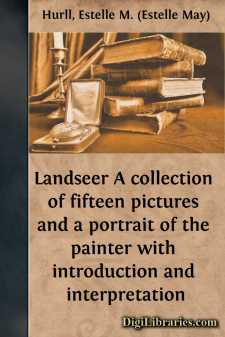Categories
- Antiques & Collectibles 13
- Architecture 36
- Art 48
- Bibles 22
- Biography & Autobiography 813
- Body, Mind & Spirit 142
- Business & Economics 28
- Children's Books 17
- Children's Fiction 14
- Computers 4
- Cooking 94
- Crafts & Hobbies 4
- Drama 346
- Education 46
- Family & Relationships 57
- Fiction 11829
- Games 19
- Gardening 17
- Health & Fitness 34
- History 1377
- House & Home 1
- Humor 147
- Juvenile Fiction 1873
- Juvenile Nonfiction 202
- Language Arts & Disciplines 88
- Law 16
- Literary Collections 686
- Literary Criticism 179
- Mathematics 13
- Medical 41
- Music 40
- Nature 179
- Non-Classifiable 1768
- Performing Arts 7
- Periodicals 1453
- Philosophy 64
- Photography 2
- Poetry 896
- Political Science 203
- Psychology 42
- Reference 154
- Religion 513
- Science 126
- Self-Help 84
- Social Science 81
- Sports & Recreation 34
- Study Aids 3
- Technology & Engineering 59
- Transportation 23
- Travel 463
- True Crime 29
Greek in a Nutshell
by: James Strong
Description:
Excerpt
LESSON I.
READING
§ 1. THE ALPHABET.
Form.Name.Sound.A αAl'phaainman, [arm.]Β βBe'tabΓ γGam'magingo, [king.]Δ δDel'tadΕ εEp'siloneinmet.Ζ ζZe'tadzinadze.Η ηE'taeinthey.Θ ϑ or θThe'tathinthin.Ι ιIo'taiintin, [machine]Κ κ or ÐÐвÐâKap'pakΛ λLamb'dalΜ μMumΝ νNunΞ ξXixΟ οOm'icronοinnot.ÐÐ πPipΡ ρRhorΣ σ, final ςSig'masinthis.Τ τTautinit.Υ υU'psilonuinfull.Φ φPhifχ χKhikh(Germanch.)ψ ψPsipsΩ ωO'megaοinno.§ 2. Notes on the Alphabet.
1. α sounds broad, like a in arm, at the end of a word, and before ρ final or ρ followed by a different consonant.
2. γ has the nasal sound, like ng in king, before γ, κ, χ, or ξ.
3. ι has its long sound, like i in machine, at the end of a syllable.
Every letter is sounded, and, with the above exceptions, invariably the same.
2. ACCENT.
§ 3. Each word, except a very few monosyllables, has one of the following accents written over a vowel in it, which marks the place of the spoken tone. A few small words, called enclitics, generally throw their accent, as an acute, on the last syllable of the preceding word.
§ 4. The acute ('), which is the foundation of all the accents, stands on one of the last three syllables. In verbs, with the exception of certain forms, it stands as far toward the beginning of the word as the rules below allow. In other parts of speech it stands on the same syllable as in the ground-form, (that given in the lexicon,) except as required by these rules. When the last syllable has a long vowel or diphthong it stands on the syllable before the last.
§ 5. The grave accent (`) is only written in place of the acute on the last syllable when not before a pause, or when unemphatic. It is understood to belong to all other syllables.
§ 6. The circumflex (~) is placed on a syllable formed by the combination of two, the first of which had an acute and the second a grave; hence only on the last, or next to the last syllable, and only on a long vowel or a diphthong. When the last syllable has a short vowel, such a penult, if accented, takes the circumflex.
3. BREATHINGS, VOWELS, DIPHTHONGS, ETC.
§ 7. A vowel beginning a word takes either the rough breathing, (ÐÐÐÑÐÑ), which is pronounced like h, or else, to show the absence of that, the smooth breathing, (ÐÐÐÑÐÑ), which has no appreciable sound. Initial ρ and υ always take the rough breathing; and double ρ in the middle of a word takes the smooth breathing on the first, and the rough on the second.
§ 8. The vowels are short, (ε and ο,) long, (η and ω,) or doubtful, (α, ι, and υ,) which last, although naturally short, are sometimes lengthened by derivation.
§ 9. The diphthongs are as follows:--
Proper.With Iota Subscript.Improper.αι sounds ayÐÐÐÑÐÑ = αηυ = η and υει sounds iÐÐÐÑÐâ = ηωυ = ω and υοι sounds oyÐÐÐÑÐÑ = ωυι sounds weαυ sounds owευ sounds yuου sounds oo§ 10....












